Case Studies.
Add Case Study
Our Case Study database tracks 22,657 case studies in the global enterprise technology ecosystem.
Filters allow you to explore case studies quickly and efficiently.
Download Excel
Filters
-
(6,653)
- (2,601)
- (2,127)
- (945)
- View all
-
(5,642)
- (2,469)
- (1,692)
- (826)
- View all
-
(5,571)
- (2,178)
- (1,766)
- (643)
- View all
-
(5,247)
- (2,179)
- (1,715)
- (1,321)
- View all
-
(2,881)
- (1,448)
- (574)
- (376)
- View all
- View all 15 Technologies
- (1,985)
- (1,985)
- (1,915)
- (1,679)
- (1,629)
- View all 42 Industries
- (8,728)
- (4,742)
- (3,618)
- (3,233)
- (2,947)
- View all 13 Functional Areas
- (3,304)
- (2,787)
- (2,603)
- (2,006)
- (1,630)
- View all 129 Use Cases
- (13,581)
- (5,296)
- (4,272)
- (3,520)
- (2,856)
- View all 9 Services
- (504)
- (432)
- (416)
- (382)
- (301)
- View all 1083 Suppliers
Selected Filters
_6.jpg)
|
Digital Transformation and Network Quality Assurance for UK Service Provider
The client, a leading service provider in the UK, was facing significant challenges due to the complexity of their network. This complexity was a result of multiple acquisitions, technological disruptions, and a multi-vendor ecosystem with varied architectures. The client lacked visibility into their network service operations, which made it difficult to meet the demands of their enterprise customers for faster and more reliable network services. The client's network was built through discrete projects run by multiple vendors, leading to obsolete and siloed network technologies, tools, and processes. This resulted in slow delivery and operations, overdependency on manual efforts, delays in service delivery, frequent network issues, and lengthy restoration times.
|
|
|
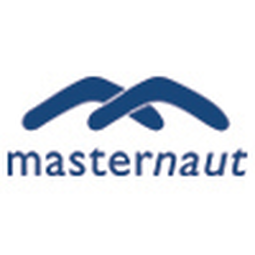
|
Elevator Engineering Services Enhances Fleet Management with Masternaut Connect
Elevator Engineering Services (EES UK), a leading engineering and manufacturing firm specializing in supporting the lift and elevator industry across the UK, faced a significant challenge in managing its mobile workforce. With a team spread across the Midlands, London, and South of England, fleet managers and the HR team rarely interacted with the drivers in person. This lack of face-to-face interaction made it difficult to monitor the welfare of the drivers and ensure the accuracy of payroll, hours, and timesheets. Additionally, EES UK wanted to improve driver behavior to create a safer working environment for its staff and other road users. The company needed a comprehensive solution that could provide accurate timesheets, monitor driver behavior, and ensure the welfare of its mobile workforce.
|
|
|
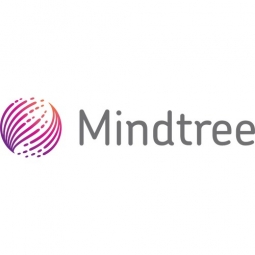
|
Mindtree Helps Global IT Solutions Provider Transform and Grow
The client had strategic aspirations to move towards a managed service provider model from a traditional value-added reseller model (hereon mentioned as VAR). This required digital transformation across their customers, vendors, and internal employees’ touchpoints, with streamlined internal supply chain processes and enhanced customer experience
|
|
|
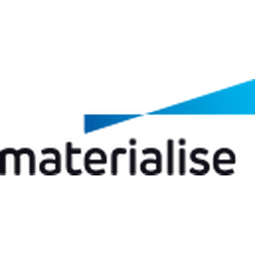
|
Personalized Automation: FITme's Journey to Increase Productivity by 346% with 3D Printing
FITme, a Korean-based company specializing in manufacturing implants for facial reconstruction, faced a significant challenge in scaling up their processes for mass personalization. The conventional process of fitting a ready-made silicone implant onto bone structure with manual carving was time-consuming and lacked precision. Surgeons had no tool to analyze patients' scan data and relied solely on photographs. This led to side effects such as bending and movement of the implant, resulting in patient dissatisfaction. The medical tourism industry in Korea was rapidly rising, and FITme had to meet higher demands and reduce lead time. The process of designing custom nasal implants that conformed to the variable shape of patient nasal profiles was a daunting and repetitive task for design engineers. It took up to three months to adequately train new engineers in designing patient implants, which was also expensive.
|
|
|

|
Leveraging Xenko Game Engine for Immersive VR Experiences: A StarBreach Case Study
Silicon Studio, the developer of the open-source cross-platform game engine Xenko, was looking to showcase the impressive graphical capabilities of their product. They aimed to demonstrate the engine's compatibility with VR and its ability to deliver high-quality virtual reality experiences and games. To achieve this, they needed to create a demo game, StarBreach, that would effectively highlight these features. However, they required an experienced art production team that could create high-quality game art for StarBreach. The challenge was not only to create visually appealing assets but also to demonstrate the technological possibilities of the Xenko game engine.
|
|
|
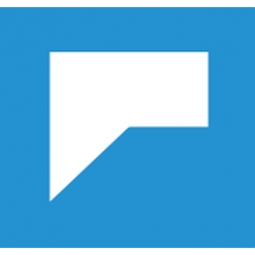
|
Highly Modular Micro-Frontend Solution for IT Asset and Service Management
The client, an IT automation platform, was faced with the challenge of discovering, managing, and securing its enterprise infrastructure. The client was seeking a solution that would ensure consistency throughout the platform, modernize their legacy enterprise solution, provide a pixel-perfect design solution, and offer a scalable frontend architecture. The client's needs were complex, requiring a solution that could accommodate the collaboration of over 30 teams across various geographies. The challenge was to create a system that was not only efficient and effective but also flexible enough to scale up or down as needed.
|
|
|

|
Software Product Development for Schibsted: A Media Corporation's Digital Transformation
Schibsted, an international media corporation, was faced with the challenge of extending their development capabilities to build new solutions and modernize existing media products. The company needed to integrate multiple websites, CMSs, and services into a single platform and introduce new efficient technologies. The task was to migrate four existing websites into one, which included database migration, UI/UX redesign, and adding new functionality. The challenge also involved developing and supporting the system infrastructure, providing high load system support, and migrating all of the company’s existing products to a newly created environment. Furthermore, they needed to integrate Neo4j graph DB with Elasticsearch Engine and introduce a Recommendation Engine.
|
|
|

|
Increasing Efficiency Through Automation and Modernization for Boohoo Group
Boohoo Group, a leading British online fashion retailer, faced significant challenges due to rapid growth and acquisition of other retailers. The company needed to modernize several internal systems used for warehouse management and tax calculation to maintain efficiency. The existing systems were causing data discrepancies and issues in product tracking. Additionally, a lot of data was stored in Excel files and had to be processed manually, which slowed down operations and increased expenses. The company aimed to automate these manual processes and modernize the existing solutions to boost their efficiency.
|
|
|
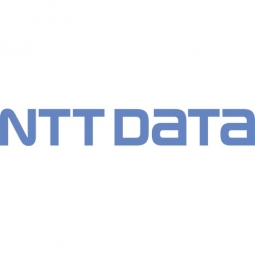
|
Digital Transformation: Arcosa's Successful Spin-off with NTT DATA
As part of a divestiture agreement with Trinity Industries, Arcosa, a leading provider of infrastructure-related products and solutions, was faced with the challenge of separating its key applications and data while deploying a new infrastructure within a tight deadline. The separation process was critical to avoid strategic distractions, talent departures, and potential changes in shareholder reaction. The divestiture agreement required Arcosa to separate its data, finances, and operational information systems from Trinity with minimal business disruption during the transition. Arcosa entered into a Transition Service Agreement (TSA) with Trinity, stipulating payment to Trinity for ongoing IT services until Arcosa could prove full independence. The task was headed by Arcosa’s CIO, Bob Rosen, who had to stand up all the underlying infrastructure from scratch, a daunting challenge given the aggressive timeframe and ongoing TSA fees.
|
|
|
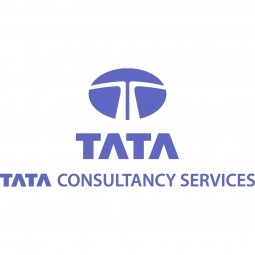
|
Equifax UK's Transformation: Enhancing Agility and Resilience with Google Cloud
Equifax, a leading global credit bureau, was grappling with the high operational cost of managing its legacy infrastructure. The company needed to modernize its application platform to make it more secure, scalable, and flexible to support new services rapidly. The goal was to leverage cloud capabilities to improve its data-centric services and deliver innovative products. The challenge was to find an optimal path to modernize and secure applications in the cloud. Equifax also aimed to gain actionable insights into customer usage patterns to ensure a high level of service availability.
|
|
|

|
Software Development Partnership with WEINMANN Emergency: Enhancing Medical Technology
WEINMANN Emergency, a Hamburg-based medical technology company, was facing challenges in developing new medical devices. The company needed to expedite the process of bringing new products to the market while ensuring compliance with medical standards and regulations. The primary goal was to speed up the development and release of their MEDUCORE Standard² solution, a portable defibrillator. The company required a technology partner with expertise in embedded Linux software development, the capacity to assemble a strong engineering team quickly, and a cost-effective cooperation model. The challenges included implementing a secure communication protocol with a telemetry server, securely uploading user session data and device logs, fixing multithreaded data access issues, building Wi-Fi network connections, improving Bluetooth printer support, and ensuring compliance with security regulations.
|
|
|

|
Revamping Brokerage Experience for Market Expansion
The client, a rapidly growing brokerage firm in Canada with over $20B in assets under administration, was facing a challenge with its trading solution. The existing mobile app, which was the core of its brokerage business, was not meeting the increasing needs of its two main user categories: investors and advanced traders. The app offered the same functionality for both types of users, making it too complicated for ordinary investors and insufficient for professional traders. The client decided to replace it with two separate mobile apps to better cater to the needs of these different user groups. Additionally, the company was looking to expand its market reach and needed a reliable technology partner to launch new solutions.
|
|
|

|
Designing an intuitive UI for effective product demand forecasting in retail
The client, a leading luxury store chain operating in over 100 countries, was facing challenges with their product demand forecasting process. The process involved a significant amount of manual work, with all sales-related data being kept in Excel tables and calculated manually. The client's merchandising and planning experts used a demand forecasting web application to make estimations of customer demand over a specific period of time. The solution calculated historical data and other analytical information to produce the most accurate predictions. However, the client wanted to improve the efficiency and effectiveness of this process, making it faster, more accurate, and less complicated for their employees. They sought to unify all processes under an intuitive UI.
|
|
|
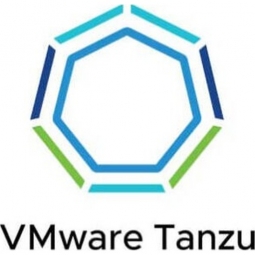
|
Modernizing Mission Critical Apps with VMware Tanzu: A VMware IT Case Study
VMware was undergoing a significant digital transformation to support its business model transition from perpetual-license software to subscription and software-as-a-service (SaaS). The VMware IT team was tasked with delivering new capabilities in an accelerated timeframe while improving performance, resiliency, and user experience. One of the apps modernized was VMware Customer Connect, a self-service portal accessed by millions of users each month. Since its launch a decade ago, the portal experienced exponential growth in traffic, leading to scalability and performance issues, outages, and latency. Its legacy codebase and monolithic architecture made it difficult to build and deliver new features. To enhance the platform’s performance and security in the short term, VMware added third-party software tools. However, a lack of integration and other inconsistencies added to the platform's complexity.
|
|
|

|
Business-VR: A Mobile Virtual B2B Multi-User Platform by MindArk
MindArk's client required a unique platform that would allow professionals to host meetings in Virtual Reality (VR) instead of using traditional telephone or video conference. The platform needed to support multiple users, up to 100, from different locations, and provide a realistic representation of the users through customizable avatars. The platform also needed to support different VR devices including Oculus, HTC Vive, Google Daydream, Samsung Gear VR, and traditional devices like iOS, Android, Windows, and OS X. Additionally, the platform needed to integrate with Google Account and Google Drive to operate with materials stored on the Drive such as PPT, Video, etc. The challenge also included creating a 3D positional / Voice proximity so users could see and hear surrounding objects/users as realistically as possible, and tracking the user’s hands and speech and synchronize it with the avatar’s lips and body language.
|
|
|

|
Revamping Bitlog's Warehouse Management System: A Case Study
Bitlog, a Sweden-based company delivering innovative supply-chain and logistics solutions, was faced with the challenge of extending the functionality of their warehouse management system (WMS). They needed to improve the user experience and develop mobile applications for iOS devices. The task was complex due to the intricate business logic of warehouse management, which required a deep understanding of warehouse workflows, stock control, product movement, picking operations, and space utilization. The WMS comprised over 10 modules with complex logic and user scenarios, necessitating the development of multiple workflows for warehouse operators and managers. The team also had to develop different modules for managers and drivers for the Transportation Management System (TMS) application.
|
|
|

|
Enhancing Performance and Scalability of Orbus Software Products through Innovation
Orbus Software, a leading global provider of software solutions for Enterprise Architecture, Business Process Analysis, and Application Portfolio Management, faced a significant challenge. The company needed to expand the testing capabilities and reduce the time to market of iServer, their core product. The intense competition in the market and the high expectations of customers for upgraded offerings made time to market a critical factor for the company. Additionally, Orbus had an extensive manual Quality Control (QC) web team, which resulted in operational overheads with regression testing. The test case base was also large and difficult to maintain.
|
|
|
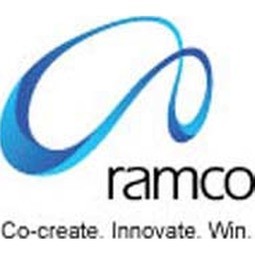
|
Leading Project Logistics Provider Employs Ramco for Integrated Solutions
The organization, a leading provider of integrated logistics solutions, was facing several challenges in its quest to become the top player in its field. The company, which is one of the largest wind and solar energy logistics players, was struggling with managing complex Over Dimensional Cargo (ODC) operations. They were also looking to consolidate all their divisions, functions, service offerings, and capabilities to achieve a high standardization and interoperability level. The company was in need of a solution partner who could accommodate and support their expansion into other logistics segments. Additionally, they were seeking a solution that would support their goal of bringing innovation to the logistics industry, which would help in delivering cost-effective and modern technology-driven solutions.
|
|
|

|
Ramping Up a Profitable New Compliance Program in Months
The challenge faced by the engineering design software provider was to build a new compliance program from scratch, start earning revenue quickly, and expand to multiple geographical markets. The company had never systematically instrumented its products to identify piracy, and wasn’t at all confident that it understood the magnitude of its problem. Like many software companies, it had relied primarily on anecdotes, speculation, and tips from disgruntled employees, but it had no reliable data to set priorities for enforcement, or to pursue specific infringers. The company needed a solution that could provide reliable data and help them pursue leads in different markets.
|
|
|

|
Accelerating Digital Transformation for a Global Fashion Retailer
The client, a leading global fashion retailer, was in the midst of a digital transformation journey. The challenge was to improve their existing legacy systems and develop new tools to accelerate this transformation. The legacy promotion management system, a desktop application used to manage promotions, lacked flexibility and could not keep up with the company's needs. It involved the use of several programs, and the client needed a unified app that would allow them to create an end-to-end promotion process. Additionally, the client required the development of a proposal management system for buyers. The buyers used excel tables and manually entered data to create proposals of goods they needed in their shops, including their quantity and the time when they needed them. The client wanted to reduce the amount of manual work and automate this process.
|
|
|

|
Continental's Vehicle Systems Development Accelerated by Wind River Compiler
Automotive supplier Continental was faced with the challenge of saving time, reducing costs, and standardizing the development process across its globally dispersed development sites. The company also had to meet the requirements of the functional safety standard ISO 26262. This necessitated a global effort to standardize the development process during every phase and at every geographic site, using common processes and tools. The challenge was not only to streamline and standardize the development process but also to ensure compliance with safety standards across all its development sites.
|
|
|

|
Increasing Efficiency in Finance Through Automation and Cloud Development
The client, a leading provider of a wide range of tax services to thousands of clients in nearly 100 countries worldwide, was facing a challenge with their property tax calculation services. These services were mostly completed manually with the help of Excel sheets. As their business grew and the number of customers increased, these calculations started to incur substantial amounts of time and effort. The manual process was not only time-consuming but also led to additional operational expenses. The company needed to automate this process to maintain their efficiency and keep up with the growth.
|
|
|

|
Revamping User Experience for Book2Meet's Hospitality Solution
Book2Meet, the largest online booking platform for meeting spaces across Europe, approached N-iX with the goal of creating an easy-to-use platform for reserving meeting venues. The challenge was to design an intuitive application that simplified the booking process, shortened the user flow, and incorporated all search filters within a single widget, all while adhering to the platform's style guide and preserving its image. The UX/UI team faced the task of placing numerous filters on the page without overloading the design and ensuring that setting search criteria wouldn't be time-consuming. The initial user journey included numerous options spread across three pages, which was cumbersome and time-consuming for users.
|
|
|

|
Web-based CCTV Solution for Enhanced Transport Connectivity
The client, a leading global provider of integrated connectivity solutions for public transport, wanted to expand their services by creating a web-based CCTV solution for transport surveillance. This was aimed at giving them a competitive edge over rivals who mostly used desktop or hybrid solutions. However, the client faced challenges in validating the feasibility, budget, and timelines of the project. They needed to define these aspects for the existing infrastructure before proceeding with the development of the web-based CCTV solution.
|
|
|

|
Teradici's Successful Transition to Subscription Model Driven by IoT
Teradici, the creator of the PCoIP® remote display protocol, faced a significant challenge in transitioning from a hardware-based business model to a software subscription model. The company's initial offering was workstation cards that converted high-performance towers, blade servers, or rack workstations into a workstation that delivers high-end images to any remote location over affordable IP networks. However, as CPUs and GPUs became more robust, the company saw an opportunity to port its solution to run on software, offering more flexibility for customers and recurring revenue. The challenge was to implement a flexible licensing system across multiple products, centralize entitlement management for automation and data gathering, and integrate with Salesforce.com and the cleverbridge ecommerce platform. The company also aimed to improve order processing, increase operational efficiencies, and offer an ecommerce channel.
|
|
|
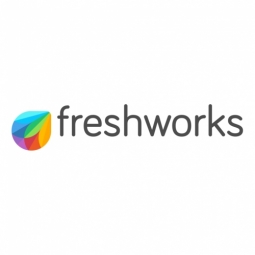
|
Diversey's Transformation: Achieving 100% Productivity and Agent Satisfaction with Freshdesk
Diversey, a global hygiene company, was facing significant challenges with its customer support system. The team was using email and email groups to interact with both their customers and employees, which led to a loss of context, confusing threads, and difficulty in establishing who was working on which query. This lack of organization and accountability often resulted in teammates working on the same query. The customer support team was dealing with clogged up inboxes due to high volumes of mail and phone calls, repetitive tasks due to the lack of automations, a lack of customer history, zero transparency into customer queries, and loss of context and customer queries. There was no portal for customer/agent interaction, making it impossible to route queries/problems to the right person, and ticket resolution times were long. The quality and effectiveness of their service were being affected by unanswered emails/calls/chats, delayed responses, and a lack of reporting.
|
|
|

|
Eastern Washington University's Transformation with Freshworks' ITSM Suite
Eastern Washington University (EWU), a comprehensive regional public university in Cheney, Washington, faced several challenges with its IT services. The university, which has a total enrollment of 12,633 students spread across multiple campuses and online, was struggling with legacy platforms, lack of end-user adoption, visibility and ownership of service requests, and scalability. The IT team at EWU was tasked with ensuring the on-time availability of technological facilities and services across all the campuses. However, the incumbent on-prem SolarWinds and ServiceNow solutions were not meeting the university's needs. The team was looking to modernize and scale the campus IT services, moving from on-premise to cloud-based solutions. The objective was to improve agent and end-user adoption and extend the solution instance across campus partners, departments, and other offices.
|
|
|

|
Fantastic Services Doubles Chat ROI with Freshchat Implementation
Fantastic Services, a property maintenance service provider, was facing challenges with its custom-built live chat platform. The platform had limited capabilities and features, which resulted in agents spending more time manually picking up tickets and waiting for replies from idle customers, reducing agent concurrency. Furthermore, despite having a full in-house development team, maintaining the chat platform was proving to be difficult. Technical updates and maintenance slowed down support, and the company found it hard to manage the chat channel without external assistance. The company needed a solution that could enhance the efficiency of their sales and customer service teams and improve their chat-generated revenue.
|
|
|
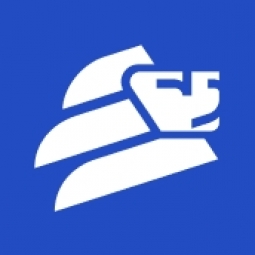
|
Embedded Software Development for Bioprinters
Scaling their business at a brisk pace, CELLINK wanted to find a reliable tech partner with solid experience in the development of IoT systems who could provide experts in С++, Qt, Embedded Linux, Marlin, MQTT, and Flutter. With bioprinters already in production, CELLINK was searching for a dedicated team able to maintain their code through bug fixing and polishing to make their bioprinter devices function even better.
|
|
|
|
|
Securing Global Industrial Networks with IoT: A Case Study on a Consumer Goods Company
The consumer goods arm of a global conglomerate, manufacturing a wide range of products, faced significant challenges in securing its operational technology (OT) environment. The company's manufacturing sites are spread globally, with some being decades old and others relatively new. The company had to manage a multitude of devices and systems, along with remote access for numerous third-party contractors, which added to the complexity of its industrial cybersecurity posture. The company was relying on traditional, IT-centric security tools that were incompatible with its OT environment. This, along with the prevalence of legacy systems, inconsistent documentation of OT assets, and diverse geographies and local practices, made gaining full visibility into its OT environment a daunting task. The company also struggled with unmonitored remote access and misconfigurations, which led to downtime. Furthermore, the company's growth through acquisitions resulted in a patchwork of systems from multiple vendors, complicating its IT and OT security. The company also lacked OT anomaly detection capabilities, which are crucial for quick response to operational disruptions.
|
|




